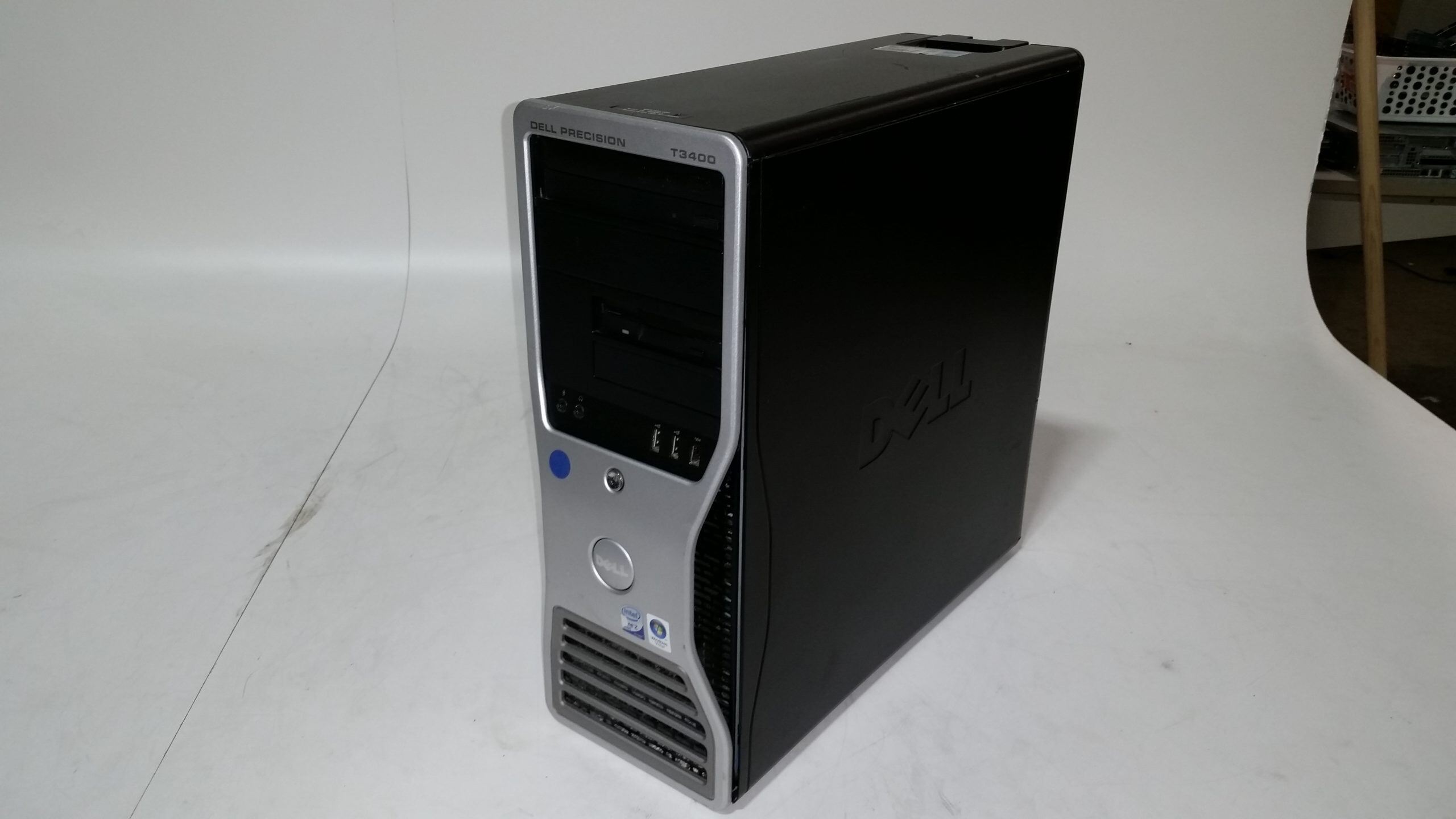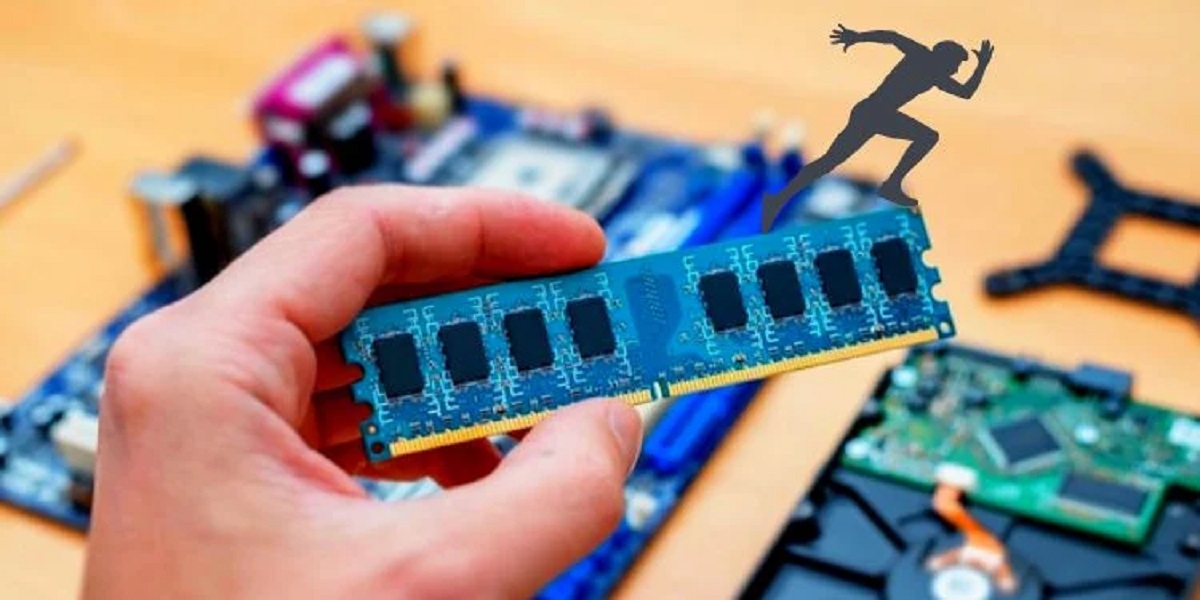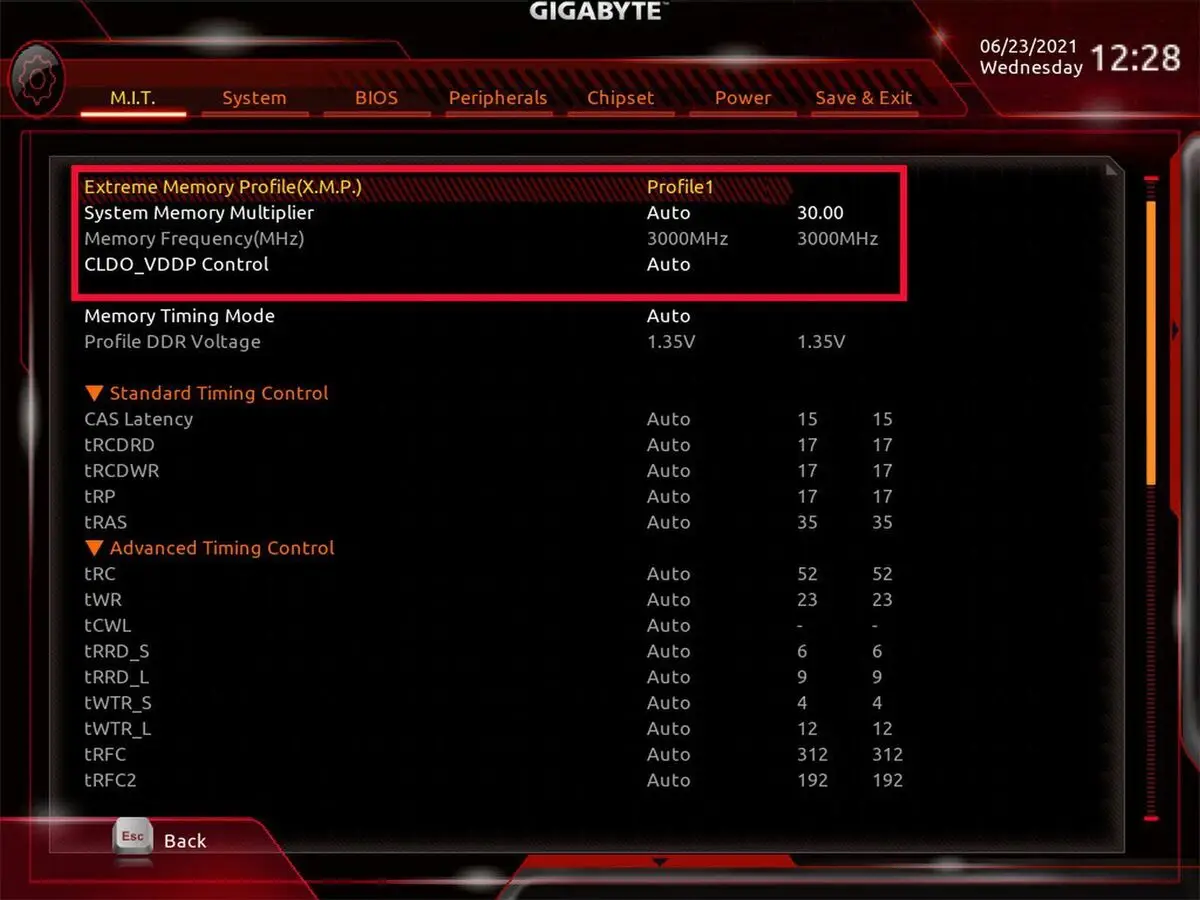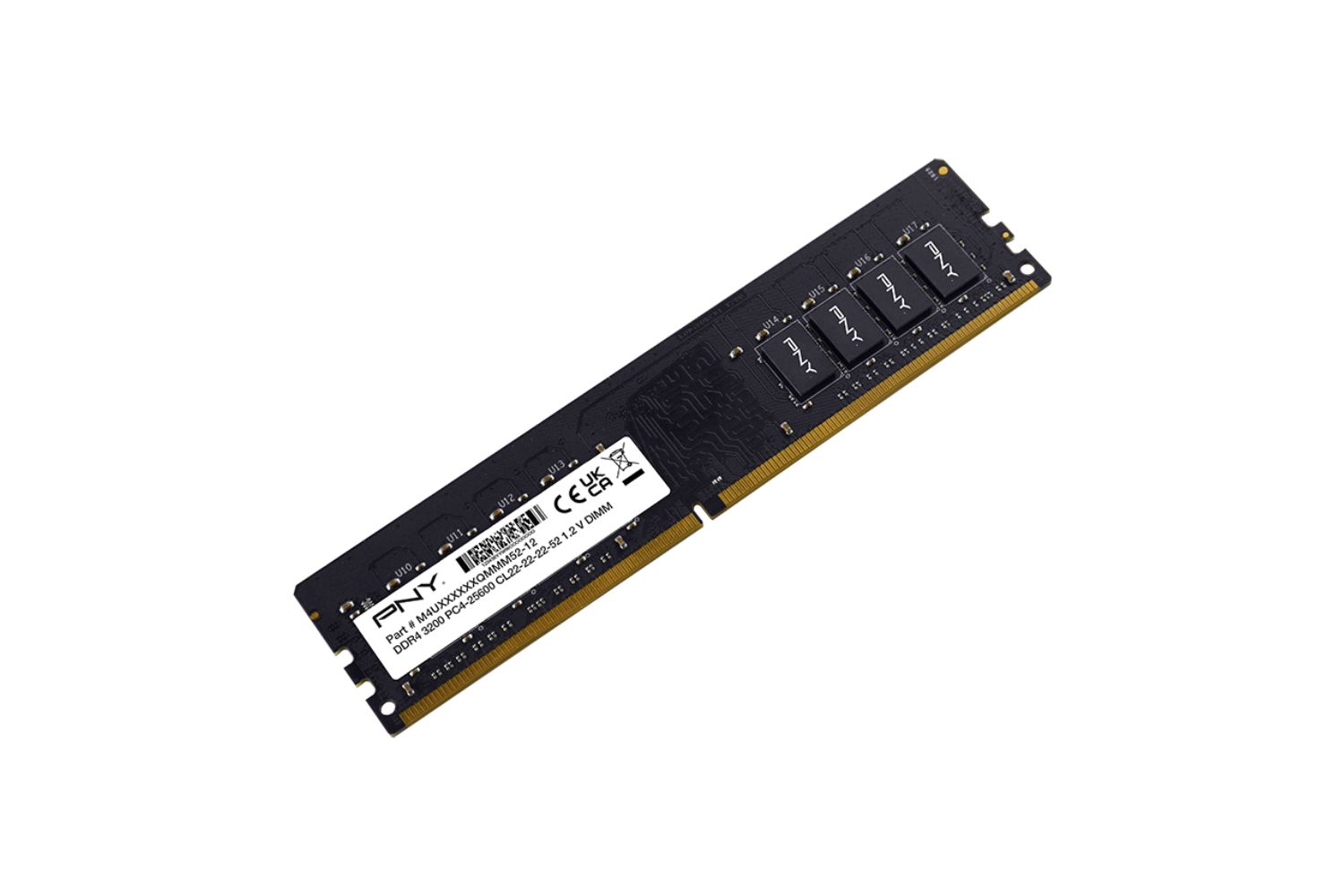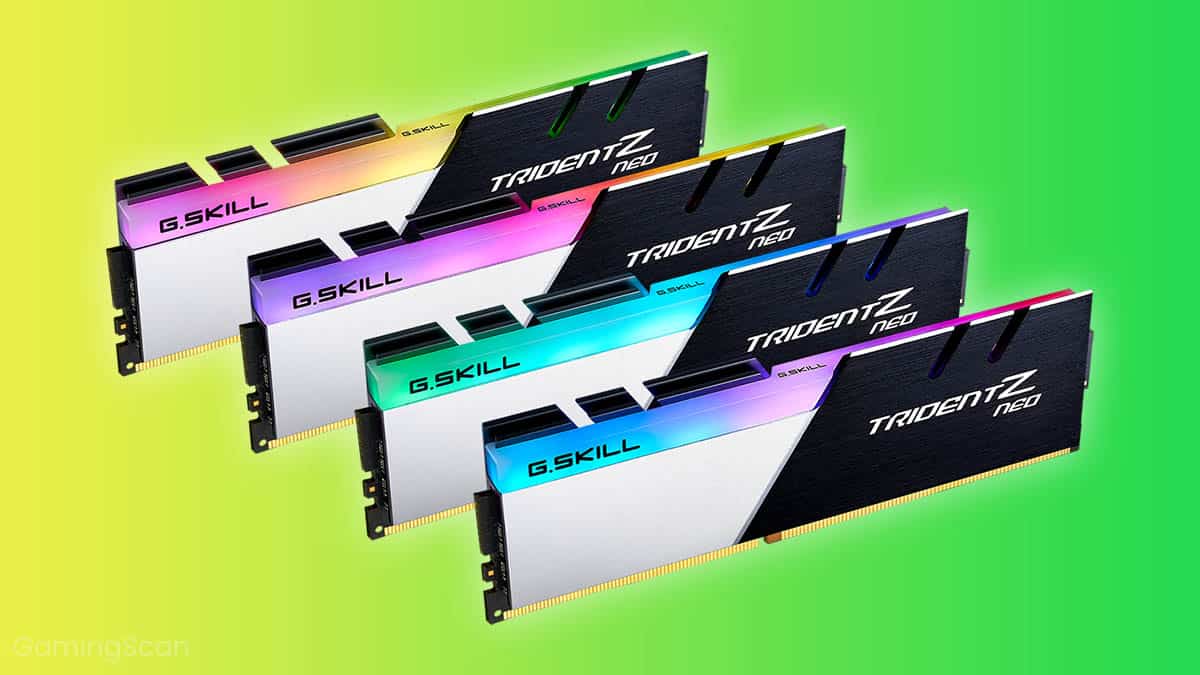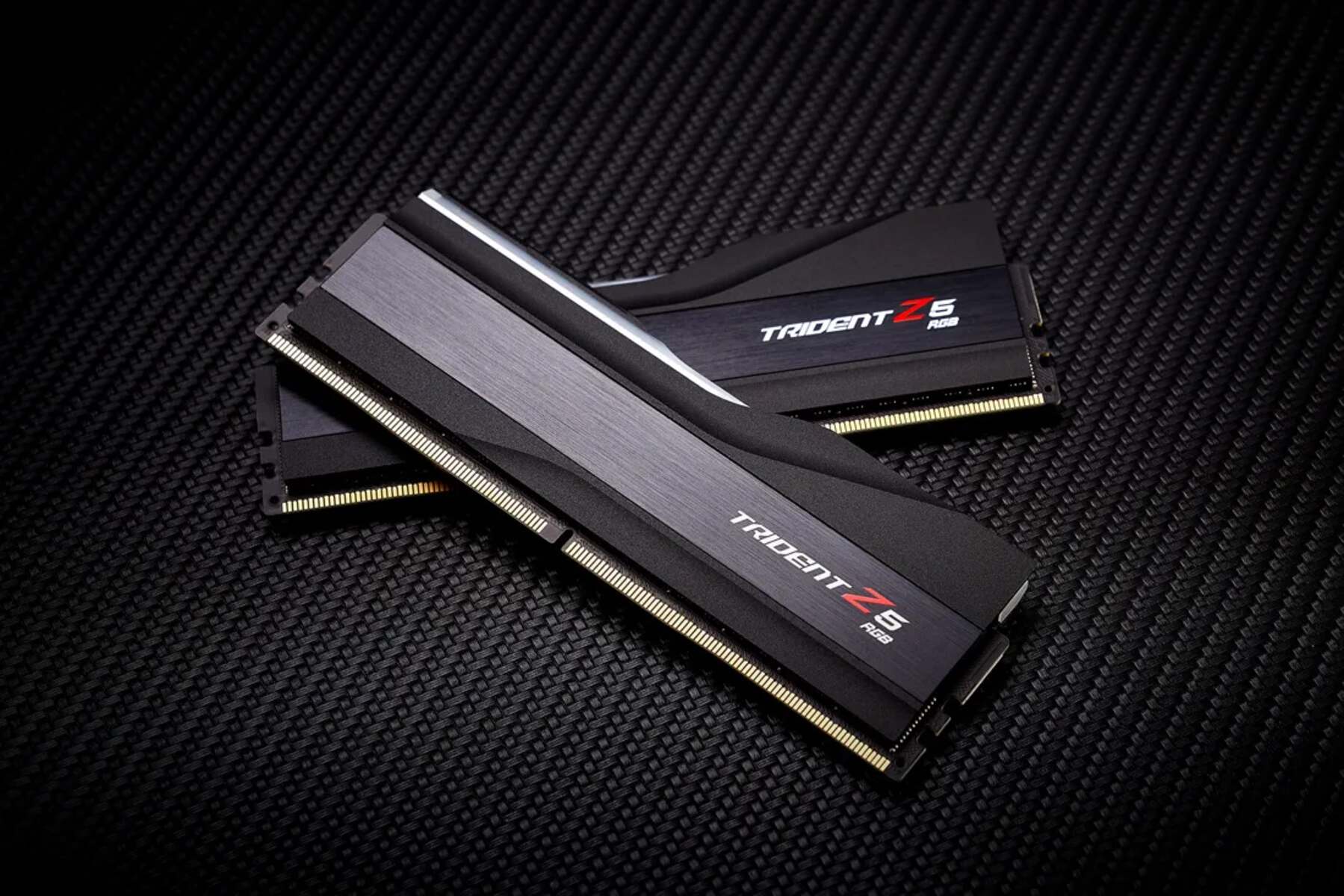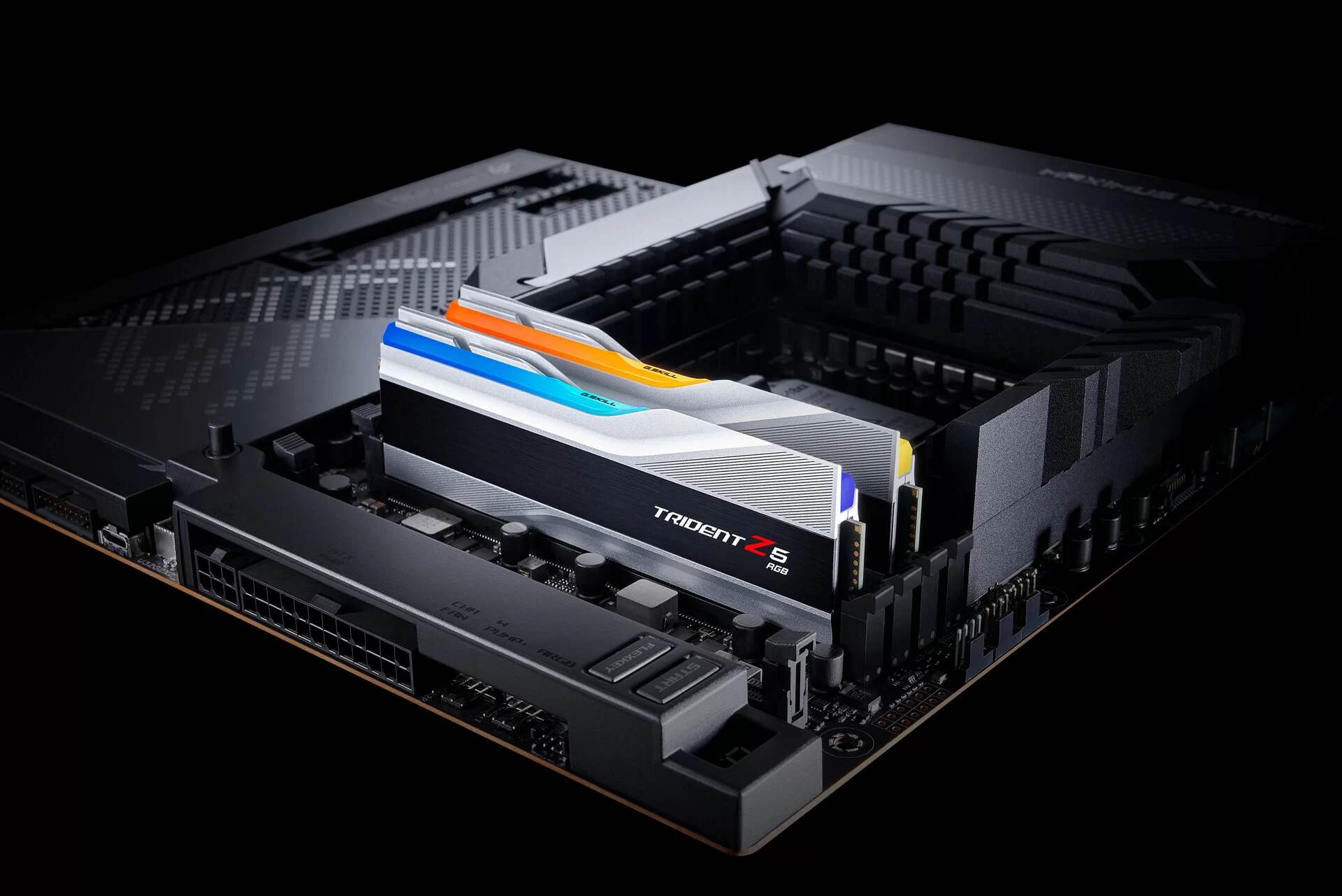Introduction
Welcome to this guide on how to speed up your RAM! In today’s digital age, where multitasking and memory-intensive applications have become the norm, having a slow RAM can significantly hinder your computer’s performance. RAM, or Random Access Memory, plays a vital role in storing temporary data that your computer needs to access quickly. When your RAM is slow, it can lead to sluggish system performance, decreased efficiency, and frustratingly long loading times.
In this article, we will explore the ins and outs of RAM and discuss the various reasons why it may become slow over time. We will also provide you with practical tips and techniques to optimize your RAM’s performance and restore your computer’s speed and responsiveness.
Before diving into the solutions, it is essential to understand how RAM works. RAM is a hardware component that enables your computer to access and manipulate data quickly. It acts as a temporary storage medium for the data that the processor needs to perform its tasks efficiently. When you open an application or a file, it gets loaded into the RAM, allowing the processor to access it swiftly.
However, over time, your RAM can become hampered by various factors, causing it to perform sluggishly. It could be due to resource-intensive programs running in the background, excessive startup programs, malware or viruses, insufficient virtual memory, or even lack of physical RAM capacity.
In the following sections, we will discuss specific methods to address these issues and speed up your RAM. By implementing the strategies outlined in this guide, you can optimize your computer’s performance and enjoy a snappier and more efficient computing experience.
Understanding RAM
Before we delve into the ways to speed up your RAM, let’s take a closer look at what RAM is and how it functions. RAM, which stands for Random Access Memory, is a hardware component that stores temporary data that your computer needs to access quickly. It is different from your computer’s hard drive or solid-state drive (SSD), which stores long-term data.
RAM plays a crucial role in your computer’s performance. When you open an application or a file, it gets loaded into the RAM, allowing the processor to access it rapidly. The more RAM your computer has, the more data it can store, resulting in smoother and faster operations.
RAM is volatile memory, meaning that its contents are erased when the computer is powered off. This allows for efficient allocation and deallocation of resources as needed. It enables your computer to multitask by providing temporary storage for running programs, active files, and other data that the processor needs to access quickly.
RAM operates at a much faster speed than the hard drive or SSD. While data retrieval from the hard drive can take several milliseconds, accessing data from RAM takes nanoseconds. This speed advantage ensures that your computer can swiftly respond to your commands, launch applications quickly, and handle multiple tasks simultaneously.
RAM capacity is an essential factor in determining your computer’s performance. If your computer has insufficient RAM, it may struggle to handle resource-intensive applications, leading to slower performance and frequent crashes. Therefore, it is crucial to ensure that your computer has enough RAM for the tasks you typically perform.
RAM modules come in different sizes and speeds. The speed, often referred to as the RAM’s frequency or bandwidth, determines how quickly it can transfer data to and from the processor. It is measured in megahertz (MHz) or gigahertz (GHz). The larger the size and higher the speed of your RAM modules, the better your system’s performance will be.
Now that we have a better understanding of RAM’s role in your computer’s performance, let’s explore the reasons why RAM can become slow over time and how to address these issues effectively.
Reasons for Slow RAM
There are several reasons why your RAM might become slow over time, resulting in degraded system performance. Identifying these factors is crucial in finding the appropriate solutions to speed up your RAM. Let’s explore some common causes:
- Resource-intensive programs: Running memory-intensive applications, such as video editing software or demanding games, can consume a significant amount of RAM. If you have multiple resource-intensive programs open simultaneously, it can lead to a strain on your RAM, causing it to slow down.
- Excessive background programs: Many applications run background processes that can consume valuable RAM resources. These processes may include system utilities, automatic updaters, or unnecessary startup programs. Having too many background programs can deplete your RAM and leave less capacity for running your desired applications.
- Malware and viruses: Malicious software can eat up your RAM’s resources by running in the background or initiating unwanted processes. Malware and viruses not only slow down your RAM but can also lead to system instability and compromised security.
- Insufficient virtual memory: Virtual memory allows your computer to use a portion of your hard drive as supplementary memory when the RAM becomes full. If the virtual memory is not appropriately configured or if the allocated space is low, it can cause your RAM to become overloaded and slow down your system.
- Inadequate physical RAM: If your computer has a limited amount of physical RAM installed, it may struggle to handle multiple resource-intensive tasks simultaneously. Insufficient RAM can result in frequent slowdowns, freezes, and even crashes.
Understanding these reasons for slow RAM is the first step towards optimizing its performance. In the next sections, we will discuss effective methods to address these issues and speed up your RAM, allowing your computer to run smoothly and efficiently.
Using RAM Optimizer Software
If you’re experiencing slow RAM, one solution is to utilize RAM optimizer software. These tools are specifically designed to optimize and improve the performance of your RAM. They can help free up memory, clear unnecessary processes, and optimize system settings to enhance your computer’s speed and responsiveness.
RAM optimizer software works by identifying and closing programs or processes that are consuming excessive memory. It also clears cached data and reallocates memory resources more efficiently. Here are a few steps to effectively use RAM optimizer software:
- Research and choose reliable software: There are various RAM optimizer tools available online. Take the time to research and choose one that is reputable, user-friendly, and compatible with your operating system.
- Install and launch the software: Download the RAM optimizer software from the official website or a trusted source. Run the installation file and follow the on-screen instructions to install the software. Once installed, launch the program.
- Scan your system: Most RAM optimizer software offers a scan feature that analyzes your system’s memory usage. Initiate a scan to identify processes and programs that are consuming excessive memory.
- Optimize memory usage: After the scan is complete, the software will display a list of memory-consuming processes. Depending on the software, you may have the option to manually or automatically optimize memory usage. Follow the prompts or choose the appropriate settings to optimize your RAM.
- Schedule regular scans and optimizations: To ensure optimal performance, set up the software to automatically scan and optimize your system’s memory on a regular basis. This will help keep your RAM optimized and prevent it from slowing down in the future.
While RAM optimizer software can be a useful tool in improving memory performance, it is important to note that it may not always be necessary or effective for every system. Some operating systems already have built-in memory management features that can effectively handle memory usage. Assess your specific needs and consider consulting with a professional or knowledgeable individual before utilizing RAM optimizer software.
In the next sections, we will explore additional methods to speed up your RAM, including closing unnecessary programs, disabling startup programs, removing malware and viruses, increasing virtual memory, adding more RAM modules, and optimizing Windows settings.
Closing Unnecessary Programs
One effective way to speed up your RAM is to close unnecessary programs running in the background. Many applications, even ones you aren’t actively using, continue to consume memory resources, putting a strain on your RAM. By closing these unnecessary programs, you can free up memory and improve your computer’s performance. Here are some steps to follow:
- Identify resource-intensive programs: Open your task manager or activity monitor to identify programs that are consuming a significant amount of memory. Sort the list by memory usage to easily identify the culprits.
- Select and close unnecessary programs: Go through the list of running programs and identify the ones that are unnecessary or that you don’t need at the moment. Select those programs and click the “End Task” or “End Process” button to close them.
- Close browser tabs and extensions: If you have multiple browser tabs open or numerous extensions installed, they can consume a significant amount of memory. Close any tabs or extensions that are not in use to free up memory.
- Disable background processes: Some programs run background processes that continue to consume memory even when the main application is closed. Look for options within the program’s settings to disable unnecessary background processes.
- Prevent unnecessary programs from starting: Some programs have settings or options that allow them to start automatically when you turn on your computer. This can increase your RAM usage right from the start. Disable the startup feature for any programs that you don’t need to automatically launch.
Closing unnecessary programs can significantly improve your RAM’s performance by freeing up memory resources. Remember to only close programs that are not essential and that you’re not actively using. Closing essential programs or system processes can lead to instability or unexpected behavior.
In the next sections, we will discuss additional methods to speed up your RAM, including disabling startup programs, removing malware and viruses, increasing virtual memory, adding more RAM modules, and optimizing Windows settings.
Disabling Startup Programs
Startup programs are applications that are configured to launch automatically when you start your computer. Many of these programs continue running in the background, consuming valuable memory and slowing down your RAM. Disabling unnecessary startup programs can significantly improve your computer’s performance and free up memory resources. Here’s how you can do it:
- Access the Startup folder: Open the Startup folder on your computer. You can typically access it by pressing the Windows key + R to open the Run dialog box, then typing “shell:startup” and pressing Enter. This will open the Startup folder.
- Identify unnecessary programs: In the Startup folder, you will see a list of programs that are set to launch at startup. Examine the list and identify any programs that are not essential or that you don’t need to start automatically.
- Disable startup programs: Right-click on the program you want to disable and select “Delete” or “Remove” from the context menu. This will prevent the program from launching automatically when you start your computer.
- Use Task Manager (Windows): Alternatively, you can use the Task Manager to disable startup programs. Press Ctrl + Shift + Esc to open the Task Manager, then click on the “Startup” tab. From there, you can enable or disable startup programs by right-clicking on them and selecting the appropriate option.
- Use System Preferences (Mac): On a Mac, you can manage startup programs through the System Preferences. Go to the Apple menu and select “System Preferences.” Then, click on “Users & Groups” or “Users & Accounts,” depending on your operating system version. Select your user account, and in the “Login Items” tab, you can manage which programs launch during startup.
By disabling unnecessary startup programs, you can reduce the load on your RAM and improve system performance. However, be cautious when disabling startup programs, as some may be essential for certain system functions or programs you use frequently. If in doubt, research whether a specific program is safe to disable or seek advice from a professional.
In the next sections, we will explore additional methods to speed up your RAM, including removing malware and viruses, increasing virtual memory, adding more RAM modules, and optimizing Windows settings.
Removing Malware and Viruses
Malware and viruses can wreak havoc on your system’s performance, including your RAM. These malicious programs can consume memory, run background processes, and disrupt normal system operations, leading to a significant slowdown in your computer’s performance. Removing malware and viruses is crucial to restore your RAM’s speed. Here’s how you can do it:
- Install reputable antivirus software: Start by installing reliable antivirus software that offers real-time protection and regular system scans. Choose a well-known and reputable antivirus program from a trusted source.
- Update your antivirus software: Before performing a scan, make sure your antivirus software is up to date. Regularly updating it ensures that you have the latest virus definitions and protection against emerging threats.
- Initiate a full system scan: Run a full system scan using your antivirus software. This scan will comprehensively search your computer for malware, viruses, and other malicious programs that might be affecting your RAM’s performance.
- Quarantine or delete identified threats: When the scan is complete, the antivirus software will display a list of identified threats. Take appropriate action by quarantining or deleting the threats. Quarantining isolates the threats, while deleting removes them from your system entirely.
- Perform regular scans: To maintain a clean and secure system, schedule regular scans with your antivirus software. This prevents future infections and ensures ongoing protection for your RAM and overall system performance.
It is worth noting that antivirus software may not detect or remove all malware or viruses. In some cases, more advanced or persistent threats might require specialized malware removal tools or professional assistance. If you suspect that your computer is still infected or experiencing slow RAM due to malware, consider seeking professional help to ensure proper removal and protection.
By removing malware and viruses, you can free up memory resources and improve the performance of your RAM. In the next sections, we will discuss additional methods to optimize your RAM, including increasing virtual memory, adding more RAM modules, and optimizing Windows settings.
Increasing Virtual Memory
If your computer’s RAM is running low and causing performance issues, increasing the virtual memory can help alleviate the problem. Virtual memory is a portion of your computer’s hard drive that is used as additional temporary storage when your physical RAM is depleted. By increasing the virtual memory, you provide your computer with more memory resources to work with. Here’s how you can increase the virtual memory:
- Open the System Properties: Right-click on the “This PC” or “My Computer” icon on your desktop and select “Properties” from the context menu. Alternatively, you can press the Windows key + Pause/Break key to access the System Properties.
- Access the Advanced system settings: In the System Properties window, click on the “Advanced system settings” link. This will open the System Properties window with the “Advanced” tab selected.
- Adjust the virtual memory settings: Under the “Performance” section, click on the “Settings” button. In the Performance Options window, navigate to the “Advanced” tab.
- Change the virtual memory: In the Virtual Memory section, click on the “Change” button. Uncheck the “Automatically manage paging file size for all drives” option if it is selected.
- Specify custom virtual memory settings: Choose the drive where you want to increase the virtual memory (usually the system drive, labeled “C:”). Select the “Custom size” option and enter a new value for the initial and maximum size of the virtual memory. The recommended size is typically 1.5 times the amount of physical RAM installed but can be adjusted based on your specific needs.
- Apply the changes: Once you have specified the custom virtual memory size, click on the “Set” button, then click “OK” to save the changes. You may be prompted to restart your computer for the changes to take effect. Restart your system to apply the new virtual memory settings.
Increasing the virtual memory provides your computer with additional memory resources when your RAM becomes full. However, it is important to note that virtual memory is stored on your hard drive, which is slower than the physical RAM. Relying too heavily on virtual memory can still impact system performance. Adding more physical RAM should be the primary solution for improving overall system performance.
In the next sections, we will explore additional methods to optimize your RAM, including adding more RAM modules, and optimizing Windows settings.
Adding More RAM Modules
If your computer’s RAM is consistently running low and causing performance issues, one of the most effective solutions is to add more RAM modules. Adding more RAM increases the available memory resources, allowing your computer to handle more tasks simultaneously and improving overall system performance. Here’s how you can add more RAM to your computer:
- Identify your computer’s RAM specifications: Before purchasing new RAM modules, it is important to know the type, capacity, and speed of the existing RAM in your computer. Consult your computer’s documentation or use system information tools to determine the compatible RAM specifications.
- Find compatible RAM modules: Look for RAM modules that match the specifications of your existing RAM. Consider reputable manufacturers and ensure that the modules are compatible with your motherboard.
- Prepare your computer: Shut down your computer and unplug it from the power source. Open the computer case by removing the side panel or accessing the RAM slots, depending on the computer model.
- Insert the new RAM modules: Carefully handle the new RAM modules by their edges, ensuring that you do not touch the gold contacts. Align the notches on the RAM module with the slot on the motherboard and firmly insert the module until it clicks into place.
- Power on your computer: Replace the computer case panel, reconnect all cables and peripherals, and power on the computer. The system should automatically detect the new RAM modules during the booting process.
- Verify the additional RAM: To confirm that the new RAM modules have been recognized, go to your computer’s system settings or use system information tools to check the installed memory. It should reflect the increased capacity.
Adding more RAM can provide a significant boost to your computer’s performance, especially if you frequently work with memory-intensive applications or perform multitasking. However, it is important to ensure that your computer’s motherboard supports additional RAM modules and that you install them correctly.
By increasing the RAM capacity, you provide your computer with more memory resources to handle tasks efficiently. This can result in smoother and more responsive performance, reducing the strain on your RAM and enhancing overall system speed.
While adding more RAM is a highly effective solution, it is important to weigh the cost of purchasing RAM modules versus the potential performance gains. Additionally, other factors such as the computational requirements of your specific tasks should also be considered.
In the next section, we will explore optimizing Windows settings to further improve your RAM’s performance.
Optimizing Windows Settings
Optimizing various settings in the Windows operating system can have a significant impact on your computer’s RAM performance. By tweaking these settings, you can free up memory resources, reduce unnecessary processes, and improve overall system responsiveness. Here are some key Windows settings you can optimize to enhance your RAM’s performance:
- Adjust visual effects: Windows provides various visual effects that can consume memory resources. Adjusting these settings can help free up RAM. To access the visual effects settings, right-click on “This PC” or “Computer,” go to “Properties,” select “Advanced system settings,” and under the “Performance” tab, choose “Adjust for best performance” or manually disable specific visual effects you don’t need.
- Manage startup programs: As discussed earlier, disabling unnecessary startup programs can significantly reduce the strain on your RAM. Use the Task Manager to manage startup programs and prevent them from launching automatically when you start your computer.
- Disable unnecessary services: Windows runs various services in the background that may not be essential for your specific needs. Use the Services Manager (services.msc) to customize the startup type of services or disable those that are unnecessary for your usage scenario. Exercise caution when disabling services, as some are required for proper system functionality.
- Minimize background applications: Close applications running in the background that you aren’t actively using. Use the Task Manager to identify memory-consuming processes and end them if they are not needed at the moment.
- Optimize virtual memory: As discussed earlier, increasing virtual memory can help compensate for low physical RAM. Optimize virtual memory by adjusting the initial and maximum size to values that suit your computer’s needs, as detailed in the “Increasing Virtual Memory” section.
- Update your operating system: Keeping Windows up to date with the latest updates and patches can improve system stability, security, and performance. Regularly check for and install system updates through the Windows Update settings.
Optimizing Windows settings can go a long way in improving your RAM’s performance. By reducing unnecessary processes, visual effects, and startup programs, you can free up memory resources, allowing your computer to run faster and more efficiently.
Remember to exercise caution when adjusting settings and disabling services, as certain changes may have unintended consequences. It is recommended to research or consult with a professional before making any modifications to critical system settings.
In this article, we have explored various methods to speed up your RAM, including closing unnecessary programs, disabling startup programs, removing malware and viruses, increasing virtual memory, adding more RAM modules, and optimizing Windows settings. By implementing these solutions, you can optimize your RAM’s performance and enjoy a smoother and more efficient computing experience.
Conclusion
In this comprehensive guide, we have discussed various methods to speed up your RAM and improve your computer’s performance. RAM, being a crucial component in your system, plays a vital role in ensuring smooth multitasking and efficient data processing.
We began by understanding the fundamentals of RAM and the reasons why it can become slow over time. Resource-intensive programs, excessive background processes, malware and viruses, insufficient virtual memory, and inadequate physical RAM capacity all contribute to sluggish performance.
To optimize your RAM, we explored several practical solutions. These include closing unnecessary programs to free up memory, disabling startup programs that consume valuable resources, removing malware and viruses to eliminate memory-hogging processes, increasing virtual memory to compensate for low physical RAM, adding more RAM modules to enhance memory capacity, and optimizing Windows settings to reduce memory usage.
It is important to note that the effectiveness of these solutions may vary depending on your specific system configuration and requirements. It is always a good practice to evaluate your computer’s needs and seek professional advice if needed.
By implementing these strategies, you can significantly enhance your computer’s performance, experience faster loading times, reduce lag, and enjoy a more efficient and productive computing environment.
Remember to regularly maintain your system, update antivirus software, and perform necessary scans to ensure continued RAM optimization. Additionally, consider periodic hardware upgrades, such as adding more RAM, to keep up with evolving software requirements.
Hopefully, this guide has provided you with valuable insights and practical steps to speed up your RAM. By implementing these optimizations, you can unleash the full potential of your computer and enjoy a seamless and responsive computing experience.









